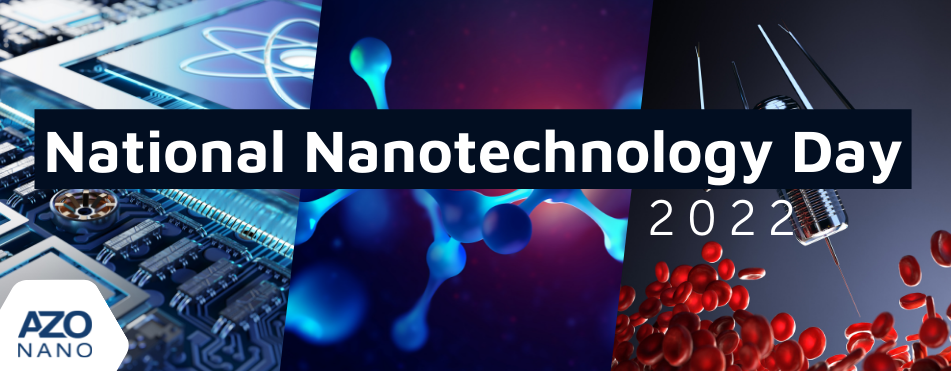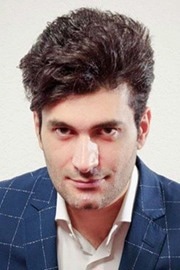
Determining the nanotoxicity of engineered nanomaterials is critical as the expansion of nanotechnology continues. In this interview, we discuss the development of the first protocol for research exploring the consequences of nanomaterials within biological media.
Please could you introduce yourself and tell us about your current position and research activities?
My name is Fazel A. Monikh and I conduct research at the University of Eastern Finland. My research focuses on developing fit-for-purpose analytical methods to understand the toxicity of microplastics, nanoplastics and nanomaterials.
How did you become involved with this investigation in particular?
I am the lead author of this study. I became involved in developing methods for nanomaterials characterization since my Ph.D.
For this specific protocol, we tried to bring together all the possible methods and techniques for the characterization of nanomaterials in biological samples to tackle the associated challenges.
Could you summarize the results of your recent research?
Engineered nanomaterials (ENMs) are increasingly used in our daily life, such as in consumer products and medicine. To understand the safety of these new materials and to increase their efficiency, it is necessary to track and analyze them in biological media. The protocol that we published recently presents a recipe that allows researchers and other stakeholders to do that.

© PolakPhoto/Shutterstock.com
This workflow is described as the first comprehensive protocol for analyzing the after-effects of nanoparticles in biological media. What distinguishes this workflow from previous strategies?
Finding and measuring ENMs in the complex matrices of biological media such as cells and tissues are global challenges and there is still no protocol for that. Previous methods have described the procedures for measuring ENMs in biological samples for specific purposes, for example, by putting fluorescent labels on the particles, which may influence the particle's composition and its behavior in organisms.
This is the first protocol to measure ENMs in biological samples. It is applicable to sample preparation, regardless of the techniques applied for measurement and irrespective of whether the particles are labeled or not.
Metal-bearing engineering nanomaterials are the focus of this new study; how might this workflow have to change for other nanomaterials?
Other nanomaterials, such as carbon nanotubes and nanoplastics are more challenging to be determined and measured in biological samples and the environment. The current protocol needs considerable optimization and different techniques to be able to measure alternative nanomaterials, such as nanoplastics in organism bodies.
What does our current knowledge landscape look like for the safety of nanomaterials?
Considerable progress has been made to measure and characterize nanomaterials in general in the environment. Different regulations have been developed for nanomaterials in consumer products. Nevertheless, we need more research to support safe and sustainable nanotechnology.
Many new nanomaterials are coming on the market and being produced yearly. However, the public still has little general knowledge about nanomaterials and nanotechnology, despite it becoming a billion dollars industry and revolutionizing the industry sector.

© murat photographer/Shutterstock.com
Investigating any potential consequences that nanomaterial interaction can have on biological substances is critical to advancing nanotechnology. What benefits can this workflow bring to the field of nanotoxicology, and more broadly, the integration of nanomaterials into applications like drug delivery and agriculture?
Designing safe and efficient ENMs for different applications requires an understanding of how ENMs behave in a given system.
Gaining such information is not straightforward and is practically challenging when ENMs enter cells and (micro)organisms. This difficulty arises because there is a limitation in analytics for characterizing and quantifying ENMs in bio- and physiological matrices.
Our protocol provides procedures to allow researchers to gain information about ENMs while they are in organisms. For example, it can help with using ENMs for drug delivery by making the particles targetable and efficient by dynamically tracking the movement of the particles. It also allows the use of pesticides in nano-from and makes the pesticides targetable while minimizing the side effects. It also enables an understanding of the toxicity of the particles to non-target organisms.
What more can be done to improve nanomaterial safety, and how can academics work with the healthcare sector to ensure that the integration of these nanomaterials into the industry remains safe?
We still have more work ahead. Close networking and collaborations between academia and the industry sector are needed to ease knowledge transfer. More funding would also be of great benefit, supporting research on the safety of nanomaterials.
What are the next steps for this research? Are there any challenges or innovations you aim to address?
Our next steps will be focused on developing a protocol that can characterize carbon-based nanomaterials such as graphene, carbon nanotubes, and nanoplastics in the environment. This is more challenging because the environment is full of natural carbon-based nanomaterials and it is not easy to differentiate between human-made and natural nanomaterials at trace levels.
About Dr. Fazel A. Monikh
 Fazel is a researcher at the University of Eastern Finland. Nanomaterials are considered emerging contaminants with many challenges yet to be tackled to assess their risk. His principal research interests lie in:
Fazel is a researcher at the University of Eastern Finland. Nanomaterials are considered emerging contaminants with many challenges yet to be tackled to assess their risk. His principal research interests lie in:
- Understanding the toxicity of microplastics, nanoscale plastic particles and nanomaterials at the molecular, organisms and population levels.
- Interaction of nanomaterials with biomolecules; understanding the fate and behavior of emerging contaminants in the environment.
- Method development for extraction, characterization and quantification of plastic particles and nanomaterials in the complex matrices of environmental samples, biological media and consumer products.
- Application of nanotechnology in aquaculture and agriculture, and environmental risk assessment.
Fazel is interested in synthesizing safe nanomaterials and tracking and characterizing them (metal-based and carbon-based nanomaterials) in biological matrices. In his research, Fazel merges his skills in nano-analytical chemistry with environmental science and toxicology to use different techniques to develop a suited-for-purpose workflow for tracing and characterizing nanomaterials in the environment and organisms.
Disclaimer: The views expressed here are those of the interviewee and do not necessarily represent the views of AZoM.com Limited (T/A) AZoNetwork, the owner and operator of this website. This disclaimer forms part of the Terms and Conditions of use of this website.